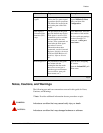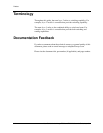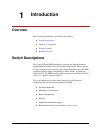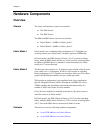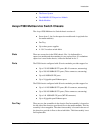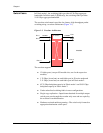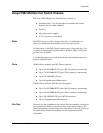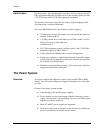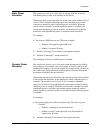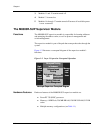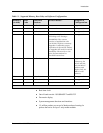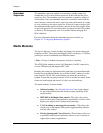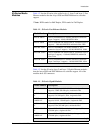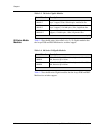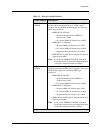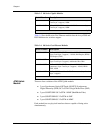
Document No. 10-300077, Issue 2 1-7
Introduction
Static Power
Allocation
The switch uses static power allocation at startup when the switch has
insufficient power to turn on all modules in the chassis.
When using static power allocation, the switch turns on the module in slot 2
(slot 3 if slot 2 contains a redundant supervisor) and then turns on each
consecutive module for which sufficient power is available. When the
switch reaches a module for which insufficient power is available, the
switch stops attempting to turn on modules. All modules below the first
module for which insufficient power is available remain turned off.
For example:
1. You turn on a P882 that has only 700 watts available.
— Modules 1 through 10 require 660 watts.
— Module 11 requires 50 watts.
2. Modules 1 through 10 are turned on and operate normally.
3. Modules 11 through 17 remain turned off.
The remaining 40 watts of available power is unused.
Dynamic Power
Allocation
The switch uses dynamic power allocation when the amount of available
power changes. For example, one power supply is turned on and you add
another power supply or two power supplies are turned on and you turn one
off. Unlike static power allocation, dynamic power allocation maximizes
the number of modules that are turned on.
When using dynamic power allocation, the switch first turns off all modules
in the chassis and then turns on the modules for which sufficient power is
available. The module in slot 2 (slot 3 if slot 2 contains a redundant
supervisor) is turned on first and then each consecutive module for which
sufficient power is available. When the switch reaches a module for which
insufficient power is available, that module remains turned off, and the
switch searches for and turns on the next module for which sufficient power
is available.
For example:
1. One power supply fails and the switch has only 700 watts of power
available.
— Modules 1 through 10 consume 660 watts.
— Module 11 and 12 each require 50 watts. But module 13
requires only 40 watts.
2. Modules 1 through 10 are turned on and operate normally.



